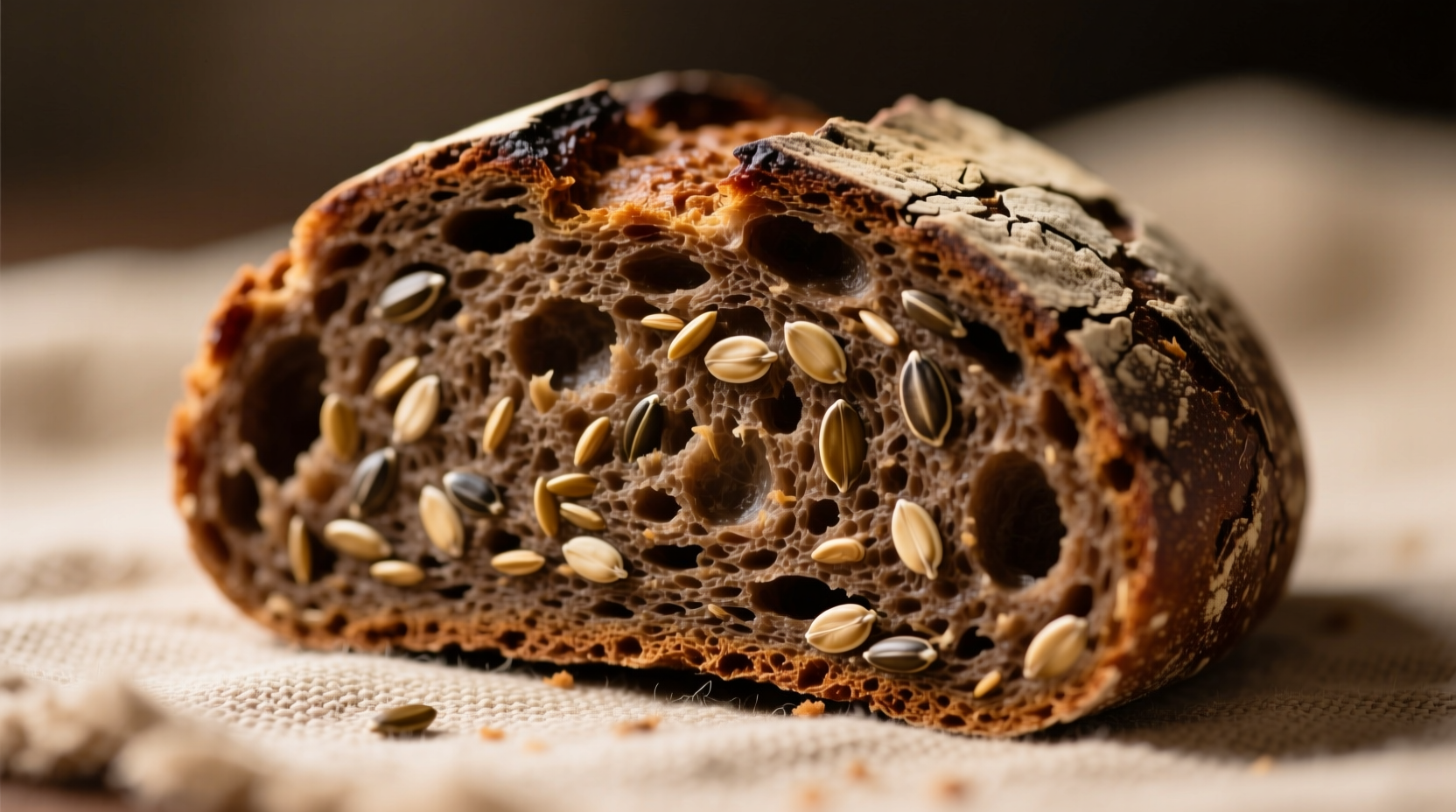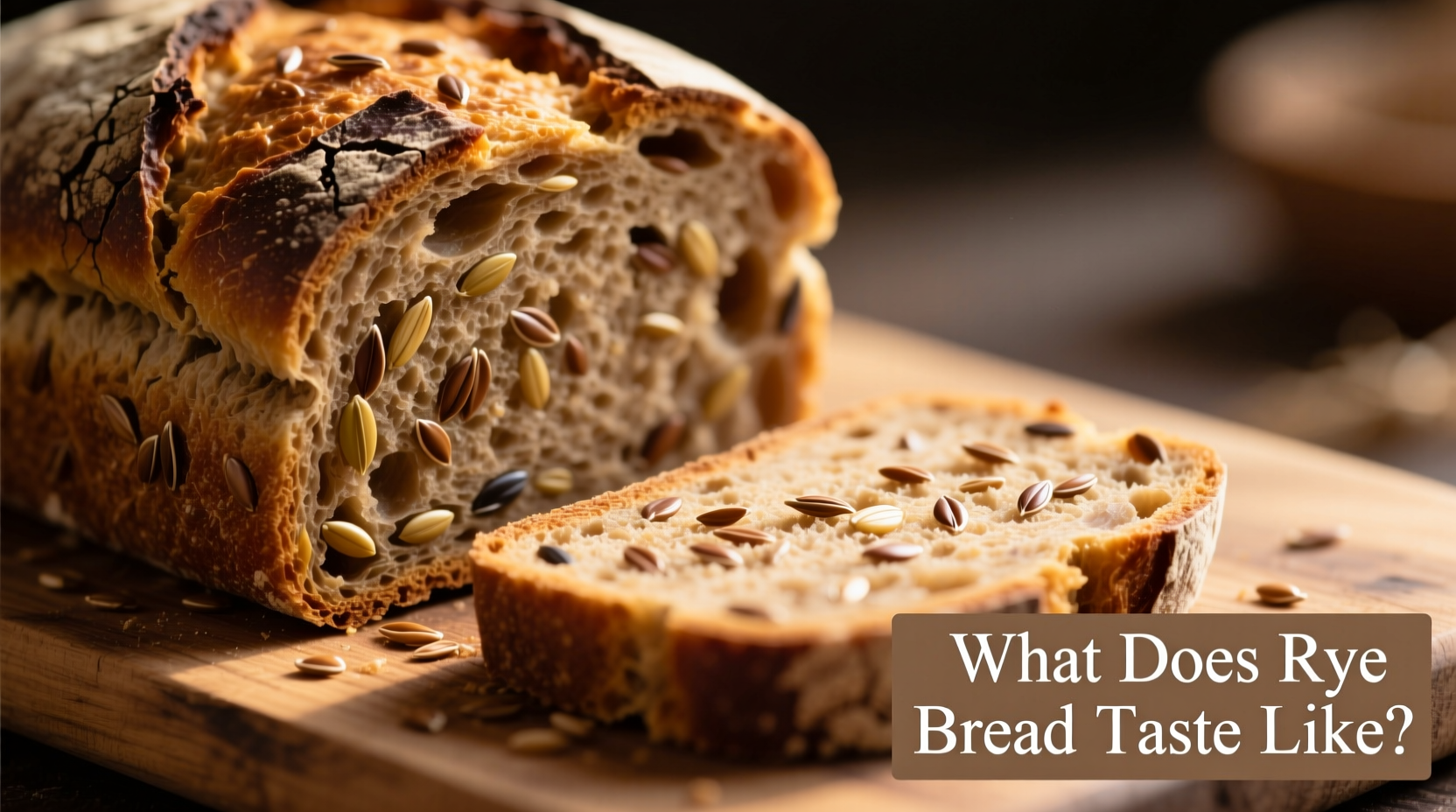If you've never tasted rye bread before, you might wonder how it compares to the standard wheat bread you're used to. Unlike the mild, slightly sweet flavor of conventional white or wheat bread, rye delivers a more pronounced taste experience that engages multiple senses from the first bite. This distinctive flavor makes rye bread a favorite for certain sandwiches and pairings where a stronger bread presence enhances the overall meal.
Breaking Down Rye Bread's Flavor Profile
Rye bread's unique taste comes from several key characteristics that work together to create its signature profile:
- Earthy grain notes - The most prominent feature, reflecting rye grain's natural flavor
- Mild sourness - From the longer fermentation process, similar to sourdough but typically less intense
- Subtle bitterness - A slight sharpness that balances the earthiness
- Complex aftertaste - Often with lingering grain notes rather than simple sweetness
- Texture contribution - Dense, moist crumb affects how flavors release in your mouth
When caraway seeds are added (common in traditional German and Eastern European rye breads), they introduce an additional layer of flavor—earthy with slight citrus and pepper notes that complement rather than overpower the rye's natural taste.
| Flavor Characteristic | Rye Bread | Wheat Bread |
|---|---|---|
| Primary Taste | Earthy, slightly sour | Mild, slightly sweet |
| Aftertaste | Complex, lingering grain notes | Simple, often fades quickly |
| Acidity Level | Moderate (from fermentation) | Low |
| Texture Impact | Dense, moist crumb affects flavor release | Lighter texture spreads flavor more evenly |
Why Rye Bread Tastes Different Than Wheat Bread
The distinctive flavor of rye bread comes from both the grain itself and traditional preparation methods. Rye grain contains different enzymes and compounds than wheat, particularly pentosans which affect both texture and flavor development during baking.
Historically, rye bread was often made using sourdough fermentation methods, which create lactic and acetic acids that contribute to its characteristic tang. This was partly practical—rye flour doesn't form gluten as effectively as wheat flour, so the longer fermentation helped improve texture while developing complex flavors.
According to research from the USDA Agricultural Research Service, rye contains higher levels of certain compounds like alkylresorcinols that contribute to its distinctive bitter notes, which many cultures have learned to balance through specific preparation techniques developed over centuries.
Factors That Influence Rye Bread's Taste
Not all rye bread tastes the same. Several factors affect its final flavor profile:
Bread Composition
The ratio of rye to wheat flour dramatically impacts taste. Pure rye bread (100% rye flour) has the strongest, most distinctive flavor, while light rye (mostly wheat with some rye) offers a milder experience. Traditional pumpernickel uses coarsely ground whole rye grains, creating a deeper, more robust flavor.
Fermentation Time
Longer fermentation periods increase the sour notes. Scandinavian and German traditions often use extended fermentation (sometimes 24+ hours), which develops more complex flavors and makes the bread more digestible.
Added Ingredients
Caraway seeds are the most common addition to rye bread in Central and Eastern Europe, adding their distinctive anise-like flavor. Some recipes include molasses or cocoa powder for color and subtle sweetness that balances rye's natural bitterness.
Baking Method
Traditional rye breads baked in steam-injected ovens develop a thinner, less crunchy crust that allows the bread's natural flavors to shine through rather than being dominated by caramelized crust notes.

How to Appreciate Rye Bread's Unique Flavor
If you're new to rye bread, approach it with an open mind—its flavor profile differs significantly from standard sandwich breads. Start with lighter rye varieties if you're accustomed to mild-flavored breads, then gradually explore darker, more traditional options.
Rye bread shines when paired with complementary flavors. The classic Scandinavian combination of rye bread with pickled herring and sour cream creates a perfect balance where the bread's earthiness supports rather than competes with the fish. In Eastern Europe, rye often accompanies hearty stews and roasted meats, where its robust flavor holds up to strong accompaniments.
For cheese pairings, try rye bread with aged gouda, swiss, or blue cheeses—the bread's slight acidity cuts through the richness while its earthy notes complement the cheese's complexity. Avoid pairing rye with delicate flavors that might be overwhelmed by its distinctive profile.
Common Misconceptions About Rye Bread's Taste
Many people mistakenly believe rye bread should taste overwhelmingly sour or bitter. While it does have these elements, properly made rye bread achieves a balanced flavor profile where no single note dominates. The best rye breads offer complexity rather than intensity.
Another misconception is that all rye bread contains caraway. While common in German and Eastern European traditions, many Scandinavian and Russian rye breads are made without seeds, allowing the pure rye flavor to shine through.
First-Time Rye Bread Experience Tips
When trying rye bread for the first time, consider these suggestions to fully appreciate its distinctive taste:
- Start with lightly toasted slices to mellow any sharp edges in the flavor
- Pair with mild toppings initially (butter or cream cheese) before moving to stronger flavors
- Notice how the flavor evolves as you chew—the texture affects flavor release
- Try it with traditional accompaniments like smoked salmon or roast beef
- Give it multiple tries; many people develop a preference for rye after several exposures
Remember that rye bread's flavor can vary significantly between brands and recipes. If your first experience isn't positive, try a different variety before dismissing rye bread entirely. Many specialty bakeries offer tasting samples that let you compare different rye bread styles side by side.
Understanding Regional Variations
Rye bread tastes different across cultures due to regional traditions and available ingredients. In Scandinavia, you'll find lighter, slightly sweetened rye breads often made with a combination of rye and wheat flours. German pumpernickel features a deep, almost coffee-like flavor from long, slow baking. Russian black bread incorporates additional ingredients like molasses for color and subtle sweetness that balances rye's natural bitterness.
These regional variations demonstrate how cultures have adapted rye bread to local tastes while maintaining its distinctive character. Understanding these differences helps set proper expectations when trying rye bread from different traditions.
Does rye bread taste sour like sourdough?
Rye bread often has a mild sourness, but it's typically less pronounced than traditional sourdough. The sour note comes from the natural fermentation process, but rye bread's dominant flavor is earthy rather than sour. Some rye varieties use sourdough starters, which increases the tanginess, but even then, the earthy grain notes remain the primary flavor characteristic.
Why does rye bread taste bitter to some people?
Rye contains natural compounds called alkylresorcinols that contribute slight bitterness. This is more noticeable in 100% rye breads. The bitterness serves as a balancing element to the bread's earthiness and sour notes. Many people develop a preference for this complexity over time, similar to how some acquire a taste for dark chocolate or coffee.
How does caraway affect rye bread's flavor?
Caraway seeds add an earthy, slightly citrusy note with subtle pepper undertones that complements rather than masks rye's natural flavor. The seeds' essential oils interact with rye's compounds to create a more complex taste profile. Not all rye bread contains caraway—this is primarily a Central and Eastern European tradition, while Scandinavian rye breads often omit seeds to showcase pure rye flavor.
Does the color of rye bread indicate its flavor strength?
Generally yes—darker rye breads (like pumpernickel) have a stronger, more robust flavor than lighter varieties. The darkness comes from using whole rye grains, longer baking times, or added ingredients like molasses. Light rye bread contains more wheat flour and has a milder taste, making it more approachable for those new to rye.
How should rye bread taste when it's fresh versus stale?
Fresh rye bread has a moist, slightly springy texture that allows flavors to release gradually as you chew. As it stales, the texture becomes denser and drier, which can make the earthy and bitter notes more pronounced. Unlike wheat bread, properly stored rye bread maintains quality longer due to rye's natural preservative properties. Toasting stale rye bread can revive its flavor by enhancing caramelization notes.











 浙公网安备
33010002000092号
浙公网安备
33010002000092号 浙B2-20120091-4
浙B2-20120091-4